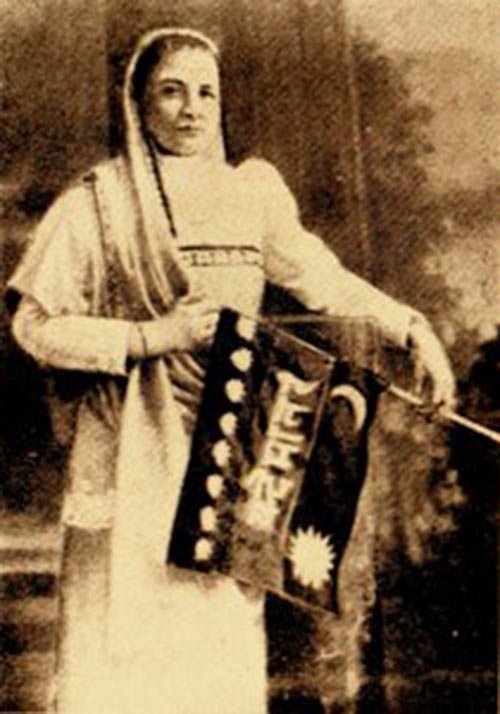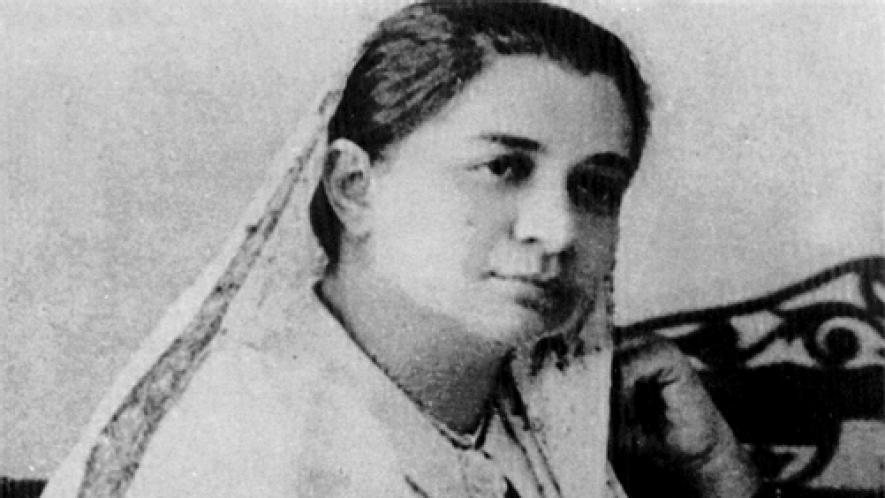“Where is the other half of Egypt? I see only men who represent half the country! Where are the mothers? Where are the sisters? You must not forget that the hands that rock cradles also build persons”, said Madam Bhikaji Cama at the National Conference of 1910 in Cairo, Egypt.
A dedicated nationalist, Bhikaji Cama spent her life in service of the Indian struggle for freedom. Her achievements were unique and her impact powerful, but her legacy is weak and often forgotten. This Women’s History Month, let us remember her and expand the narrative of India’s historical national movement.
Early life
Cama’s early life exposed her to the freedom struggle in its initial stages and she was deeply impacted by it. Born on 24th September 1861, she grew up in a well-off Parsi family in Bombay in a politically charged atmosphere.
She attended the Alexandra Girls’ English Institution set up by pro-women’s education reformer and judge Manockjee Cursetjee. At 24, she married Rustom Cama. Her relationship with her husband was strained due to their opposing opinions and perspectives on the British Raj.
He was loyal to the British and saw their rule as beneficial to Indians. She distrusted them and hated the imperialism they propagated and oppression they practised. The marriage wasn’t harmonious and Cama became more involved in the nationalist effort, much to the disdain of her husband.
Freedom struggle and activism
As a philanthropist, she devoted her time to social work. The chain of events that would define her life and work was set in motion when she volunteered to help victims of the bubonic plague in the Mumbai Presidency. When trying to save the lives of the diseased, she caught it herself. Although she recovered, she was left fragile and in need of better treatment. This led to her shift to Britain for treatment in 1902.
Here, she became acquainted with influential Indian nationalist leaders who were living in Europe. She became the personal secretary of Dadabhai Naoroji, founder of the Indian National Congress and the first Indian to be a British Member of Parliament. She interacted with revolutionaries Shyamji Krishnavarma and Lala Har Dayal and helped found the Indian Home Rule Society.

Image Credit: Storypick
In 1905, when she attempted to return to India, she was informed by the British that her return would only be sanctioned if she agreed to stop all nationalistic activity. She rejected this condition and decided to spend her life in a foreign country instead of submitting to the British.
She shifted to Paris and alongside two other political activists, founded the Paris Indian Society, another branch of the Home Rule Movement which grew to become one of the most important Indian nationalist organisations abroad. Her Paris home later became a refuge for revolutionaries wanted by the British.
During her time in Europe, she published and distributed revolutionary literature to spread awareness about the Indian freedom struggle. She smuggled works like Bande Mataram and Madan’s Talwar into India after the British had banned their distribution and often sent funding and resources for the movement. Even from a separate continent, she was taking part in the freedom struggle.
Also Read: Durgabai Deshmukh And Her Unending Devotion To Social Welfare | #IndianWomenInHistory
Her contributions didn’t stop there. She participated in the second Socialist Congress in 1907 in Stuttgart in Germany, the largest meeting of international Socialist parties ever. Here, she famously addressed the gathering and informed them of a famine occurring in India and advocated for autonomy within the subcontinent.
She displayed her design for the Indian flag, a tri-colour flag representing the 8 provinces within India and the Hindu and Muslim faiths. She addressed the assembly: “I appeal to lovers of freedom all over the world to support this struggle.” When this conference took place, international awareness of British atrocities and oppression in India was low and Cama making this speech would have been a monumental and brave stand against the British.
Bhikaji Cama was an advocate of gender equality and women’s rights. She once told 2 Parsi women fighting for a woman’s right to vote that they should “Work for Indian’s freedom and independence. When India is independent, women will not only have the right to vote but all other rights.” Her stance on equality was interwoven with her desire for freedom and emancipation from British rule, but not above it.
At one point, the British government tried to have her extradited from France and seized her inheritance. Lenin, the Russian Communist leader apparently offered to let her stay in the Soviet Union but Cama declined. She continued to travel and visited the United States after Stuttgart.
When Britain and France became allies in the World War, the French government detained her and required her to stay under the surveillance of the French police. Her interaction with Indian and foreign revolutionaries was not affected and she continued to remain in touch with the movement. She shifted from to Bordeaux and then back to her original home in Paris where she remained till 1935 well into her 70s.
After the war, she petitioned to return to India and agreed to cease revolutionary activity. It is likely that the British no longer saw her as a threat in her old age. At the age of 74, she finally returned to India, after living in exile for the majority of her adult life. When she died in 1936, years before India would actually become independent, she left her assets to the Avabai Petit Orphanage for Girls.
Legacy

Image Credit: Indian Philately
Bhikaji Cama was educated and informed – a woman who travelled the world and fought for a cause at a time when the opposite was expected. Her story is fascinating and her work broke barriers in dozens of ways. She stood at par and often exceeded the male nationalists with whom she collaborated.
Cama preferred to spend her life in a foreign land rather than betray her beliefs, an act of protest few can claim to have carried out. Today, when we study Indian and World History in our schools, we learn about Raja Ram Mohan Roy’s achievements in social reform and Bal Gangadhar Tilak’s leadership in the freedom struggle.
We shouldn’t discount any freedom fighter’s achievements, but to really understand our history and background, we have to remember the fierce, passionate and brilliant women that made it too. Women such as Bhikaji Cama.
Also Read: Chandraprabha Saikiani: Breaking Barriers In Women’s Education | #IndianWomenInHistory
Featured Image Credit: Firstpost Hindi
About the author(s)
A student at Ashoka University, Tara loves poetry, impassioned conversation and brewing warm cups of tea.




